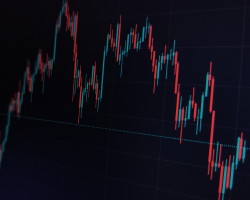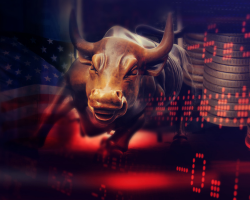Understanding Forex Risks and Risk Management

Competent control of risks and adherence to risk management in trading is the key to success for any trader. But, unfortunately, traders spend very little time on this issue, focusing on finding various profitable strategies and indicators.
However, with only technical analysis tools you will never get a stable result, and your yield curve will look more like a roller coaster than a center of stability and confidence in the future.
That's why it's very important not only to know what risks are there in forex trading but also to learn how to control them. And that is exactly what we will talk about today.
Forex Risks Traders Should Consider
The foundation of effective risk management is the ability to calculate possible risks, to plan one's actions in possible trading situations. For example, an experienced trader knows in advance how much he will risk in any position; what he will do if his trading system fails, leading to certain losses, the threshold of which is also calculated in advance based on testing the trading strategy.
Risks associated with forex can be divided into trading and non-trading.
Trading - these possible losses are directly related to the trading process (in one or a series of planned transactions, the planned drawdown of a strategy, etc.).
In addition to the direct risk of failure in the transaction due to incorrect forecasts, there are additional possible losses, for example, due to the widening of the spread at the moment of release of important news; slippage of Stop-Losses; any mistakes made due to inattention of the trader.
Non-trading - losses that can be incurred by the trader due to any situations not directly related to the trading process, as well as in force majeure circumstances. For example, the trader opened a large lot, did not set the limit of losses, and the light at the workplace is trivial when the market at that time began a sharp movement against the position. Any other unforeseen circumstances (scam) or bankruptcy of the company, etc.
Let's take a closer look at some of the non-trading risks that traders need to pay close attention to.
Margin risks
Margin or leverage risk can play a significant role in your trading.
What is margin trading? Margin trading allows you to use leverage. Normally, when you place a trade, you are only required to cover a portion of your position. Your trade is considered a leveraged trade if you can increase the size of your position with leveraged capital. This borrowed amount is considered a margin call.
Many brokers allow their clients to use up to 1:100 or even 1:500 leverage. But just because you have this facility, does not necessarily mean that you should take advantage of it.
Political Risks
Political and economic risk can play a significant role. Economic and political factors can change the investment landscape in a particular country, which can create risk for traders.
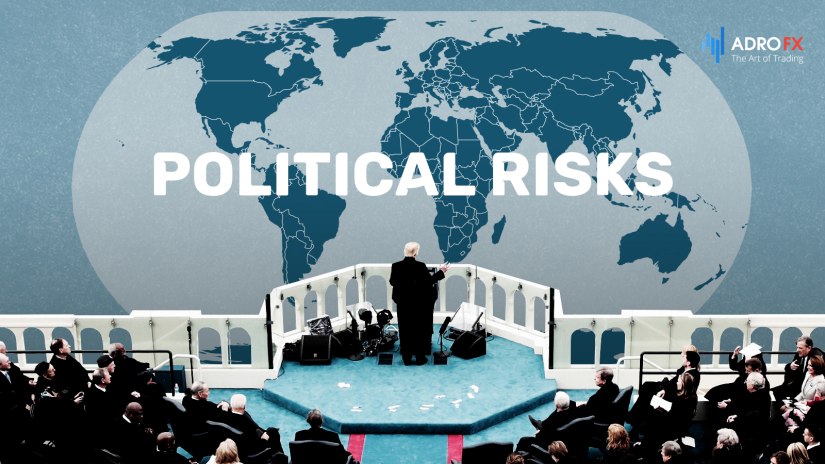
Moments of political uncertainty in a country can arise during an election, which usually leads to greater volatility in the exchange rate. As a general rule, one should follow the pre-election polls closely so as not to be surprised by the outcome of the vote. Changes in political parties can change the new government's approach to monetary and fiscal policy.
When a country has a surprise election, all sorts of uncertainties can arise. Unscheduled elections can be caused by a variety of things, such as mistrust, corruption, or scandals. Usually, unplanned elections can be very problematic and increase volatility. In addition, elections can trigger other events such as protests or strikes. It is extremely difficult for you to anticipate these events, but the more aware you are of political affairs within the country, the easier it will be for you to react to sudden changes.
Using an economic calendar will allow you to keep track of when important scheduled news events will occur so that you can better plan and schedule your trades. You should keep track of current events and news that may affect your trading positions.
Interest Rate Risks
Another important component of risk is interest rate fluctuations. We know that when an organization or institution borrows funds from a given lender, the lender provides those funds in exchange for a certain interest rate on the loan.
The interest rate is usually determined by the amount of risk that the lender assumes. Typically, borrowers who are considered high risk will pay a higher interest rate on the loan. Conversely, lower-risk borrowers will pay lower interest rates over the life of the loan.
Central banks are responsible for setting monetary policy to ensure economic growth and stability. Fluctuations in interest rates in foreign exchange markets determine many decisions for traders.
It is important to note that interest rates and exchange rates in a country are often linked. By closely monitoring changes in interest rates, you will know where large institutions are investing their assets to get the highest possible returns.
Many times, large institutions focus on carry trades, which are based on interest rate differentials. Typically, currency pairs with higher yields attract more demand from large financial institutions and investors.
Exchange Rate Risks
Exchange rate risk is the risk associated with dynamic changes in the value of a currency. It is particularly important for companies that have operations in multiple countries or regularly export their products. Often, profits and margins are closely tied to changes in exchange rates in both the country in which companies do business.
Volatility Risks
Volatility plays an important role in trading. Volatility risk describes the degree of fluctuations in the markets and should certainly be included in every trader's trading strategy.
Although many traders usually look at volatility in terms of a negative uncertain risk element, there are also many positive components of volatility. Without some degree of volatility, it would be nearly impossible for a trader to profit from their trading activity.

Usually during news events with strong consequences volatility can spike and become excessively high. This is when volatility can negatively affect a trader's open positions.
Credit Risks
When you trade in the financial markets, you should expect that the person or entity on the other side of the trade will be willing to meet their financial obligations.
Credit risk is the risk when one party to a trade cannot pay the other party. This can happen because one party goes bankrupt.
When you trade, you should be aware of the rules and regulations that your broker adheres to. The broker must be properly regulated in the country in which they do business and maintain proper reserves in case the other party involved in the trade is unable to cover their losses.
Operational Risks
Another form of risk associated with trading is operational risk. Operational risk occurs when various internal processes and human factors are involved. In addition, operational risk can include legal risks, fraud, and security.
Operational risk and management usually go hand in hand. For example, when a broker has a strong management team, the degree of operational risk is reduced. Conversely, when management is weak, operational risk increases.
As a trader, it is your responsibility to research and evaluate your trading activity to mitigate operational risks as much as possible.
Risks Associated with the Broker
Before handing over your capital, you should make sure you find a good broker. Broker risk can affect you and your working capital in a variety of ways. Some brokers are unregulated, and unfortunately, some of them have no interest in your success.
Many brokers are competing for your money today. Therefore, it is your responsibility to do the proper research and due diligence to find the most appropriate broker. While most reputable brokers are regulated, some of the smaller brokers are in offshore locations where regulatory bodies do not exist.
One of the reasons some brokers choose to conduct their business in the unregulated territory is that this way a broker can greatly reduce their overall operating costs. The cost of obtaining and maintaining a regulatory license can be quite expensive. In addition, capital requirements imposed by regulators can create a barrier to entry for many brokers who cannot raise the necessary funds.
As a general rule, it is best to try to work with a broker that is regulated by a government agency. When working with a regulated broker, proper oversight can often protect you from bad business practices or fraudulent practices. In addition, finding the right broker can also help you minimize your credit risks.
Risks of Devaluation
What is a devaluation? A devaluation occurs when a country intentionally adjusts its country's currency against another country's currency.
Devaluation is a monetary policy tool used by countries with fixed exchange rates. Devaluation is determined by the government that issues the currency and is a direct result of government action. One of the main reasons a country devalues its currency is to prevent trade imbalances. When a currency depreciates, it reduces the value of the country's exports, making exports less expensive and, in turn, making them more competitive in world markets.
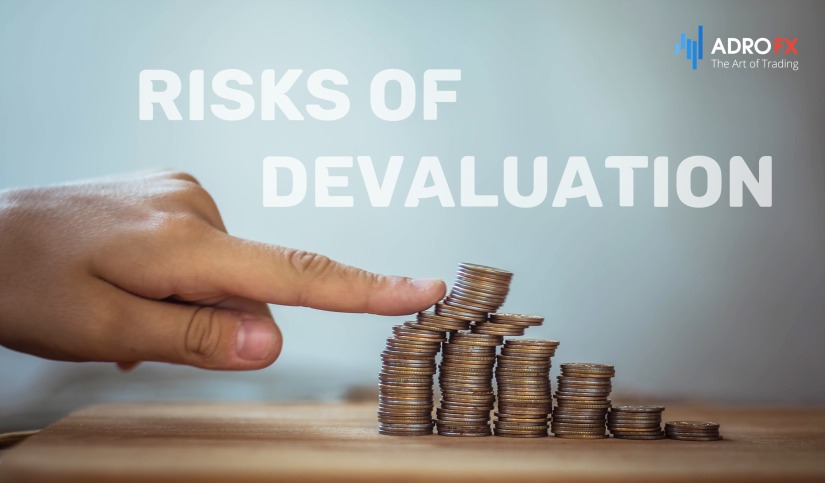
If a country devalues its currency, the country may have to raise its interest rates to control inflation. A devaluation makes goods sold in another country more attractive because the prices of goods decrease relative to the value of their currency.
Another significant currency risk associated with devaluation is psychological. Devaluation can be seen as a sign of economic weakness that can jeopardize a country's creditworthiness. Sometimes a devaluation can lead to a domino effect, in which other countries devalue their currency in response to a devaluation in a neighboring country. Such a situation only exacerbates economic problems in world markets. When trading in foreign exchange markets it is your responsibility to be aware of which countries devalue their currency and how you can take advantage of the situation.
Risks of Fraud
Another type of risk you need to be aware of is the risk of fraud. In the early days of online trading, this was more common. Recently, there have been significant improvements in weeding out unscrupulous brokers. To reduce your chances of working with an unscrupulous broker, you must carefully research the broker with whom you are going to open a trading account.
As mentioned earlier, you should find out if the broker is regulated in the country in which it does business. With a little research, you can find a lot of information relevant to well-established and not so well-established forex brokers.
What is Risk Management
Risk management is the part of the trading system that tells you exactly how many lots to hold at a given moment and how much risk to take. In other words, risk management is the control of the volume of the position. The most radical definition we know was given by Ryan Jones: risk management is limited to how much of your account to risk in the next trade. Note, this definition does not include in risk management the management of the size of an already open position, while Van Tharp admits it.
Today there are many more or less correct definitions of money management, as well as the very ways of calculating risk per trade. There are two categories in money management: good money management and bad money management. Good money management takes into account two factors: risk and reward. Mismanagement considers each factor separately: either the risk or the reward. Good money management takes into account the full range of available opportunities. Mismanagement assesses only certain properties or characteristics of an account, such as the percentage of profitable trades or the profit/loss ratio.
Risk Management and Leverage
Leverage in forex means the size of a position which you can trade in relation to your deposit. If you have 1:100 leverage, and your deposit size is $1,000, this means that you can trade a $100,000 position.
However, risk management has nothing to do with the size of your leverage.
Let's say your deposit size is $100,000. You are risking 1% of all your funds on each trade. The price of 1 standard lot is $10. Your Stop-Loss is 50 pips on EUR/USD. What volume can you trade?
Position size = 1000 / (50 * 10) = 2 lots
This equals 200,000$ EUR/USD, or in other words, 1:2 leverage.
But what if your Stop-Loss is 500 pips? Again, applying this formula, we get:
1000 / (500 * 10) = 0.2 lots.
This equals EUR/USD of $20,000, or in other words, 1:0.2 leverage.
In both cases, the maximum loss on each trade is $1,000, even if you use different leverage. Why?
The leverage you use depends on the size of your Stop-Loss. The smaller your Stop-Loss, the more leverage you can use while keeping within your risk tolerance. And the higher your Stop-Loss, the less leverage you can use for a given risk.
So don't worry about leverage, because the size doesn't matter if you have good risk management and you use a sensible Stop-Loss. It's better to focus on how much you can lose in a trade, and choose the right volume.
How to Manage Forex Trading Risks
If the non-trading risks are minimized by the right choice of a broker and control of the fundamental background on the market, the trading risks are not so simple. Let's examine how exactly traders can control the risks to avoid big losses.
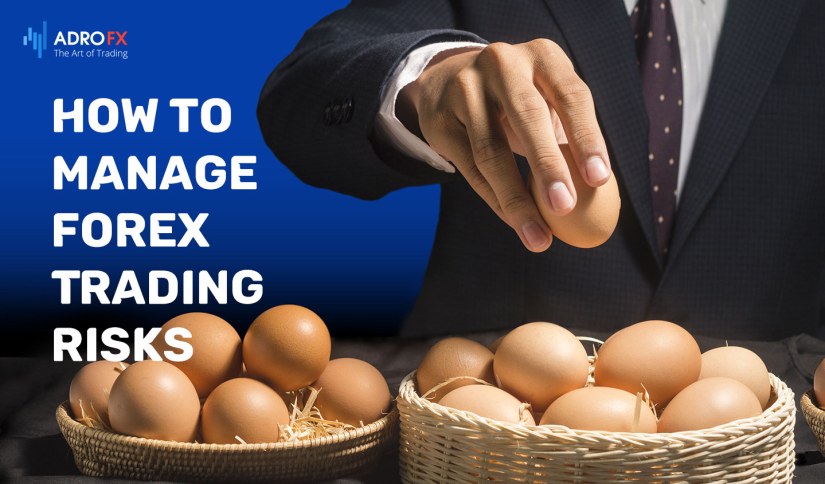
Risk Diversification
Use in trading several tactics, strategies (of course, bearing in mind that the "quantity should not compromise the quality). For example, from available 10 profitable, but mediocre strategies, it is better to choose 2-4 the most effective. Something can be traded manually, something by robots. Choose an optimal portfolio for yourself, keep some options in reserve, in case something in the strategy portfolio loses its efficiency, so that you can promptly replace it with something else.
In addition to using a portfolio of strategies, you can "put eggs in different baskets", that is, keep your capital and trade with different brokers, in case of any problems with companies (if you use really big money). We are sure that there is no need to use more than 2-3 leading brokers (mediocre, problematic, or outsiders, of course, we do not mention them).
Risk/Reward Ratio
The risk/reward ratio, as the name implies, is the ratio between the potential profit and the potential loss in one trade. To determine this ratio a trader takes the distance between the entry point and the Stop-Loss (potential loss) and compares it to the distance between the entry point and the Take-Profit (potential profit).
The good news is that we can control this ratio.
The trader can use a tighter Stop-Loss or a wider Take-Profit target to increase the risk/reward ratio. This also means that he will need a lower percentage of profitable trades to potentially trade in the upside. The price in this case will more easily reach his Stop-Loss. Thus, a tighter stop and wider profit-taking targets will result in a slower rate of return for the trading strategy.
On the other hand, you can have a wider Stop-Loss and a tighter Take-Profit. This will mean that the risk-reward ratio decreases. It is now easier for the price to reach the target, and there will be more room for error in your trades, as the need for accuracy is reduced with a wider Stop-Loss. This can also lead to more overall profitable trades.
Holding Period
The holding period is directly related to the risk/reward ratio, because the further away the target is, the longer it will take for the price to reach the target. And if you have some trading experience, you probably know that staying in profitable trades is not easy. Fixing profits too early is a frequent problem because traders constantly fear that price may reverse and wipe out all their unrealized profits.
So, choosing a broader target may seem like a good idea at first glance, but it comes with a lot of problems. Therefore, you need to make careful decisions about adjusting your goals and watch your emotional reactions.
Emotional Stability
Emotions and the psychology of trading are important parts of trading.
Risk management determines how many positive and negative emotions you get from your trading strategy. A high-profit system can be justified, but one loss can easily upset you when you are not used to dealing with losses.
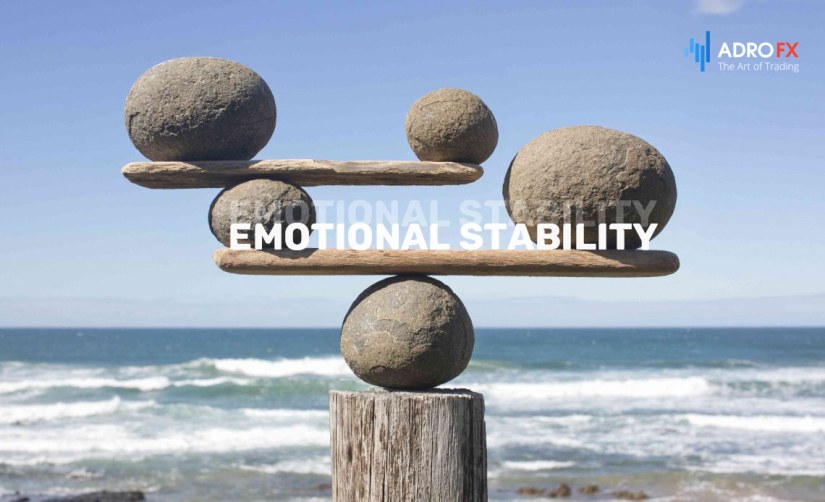
At the same time, high return systems usually have a low risk/reward ratio. This can also be problematic because it means that your profits and your losses are about the same size. Thus, getting out of a losing streak will take much longer, as well as recovering from losses.
As a general rule, professional traders trade a system with a high risk/reward ratio. Professionals can stay in profitable trades for a long time. When one profitable trade pays for your 4.5 or even 7 losing trades, the role of losses changes completely. You no longer fear losses because you know that it only takes one good trade to make up for them.
You also make money using a 2:1 risk/reward ratio. There is no need to try your best and try to catch huge profitable trades. Many traders who fail are constantly looking for trading systems with a high risk/reward ratio, while they could become profitable traders much easier if they just took what is realistic and achievable for them at the moment.
So try to create a trading strategy that fits your personality.
Use Stop-Losses
Since the forex market is especially volatile, it is important to determine your entry and exit points before you open a position.
Usually, stops will automatically close your position if the market moves against you. However, there are no guarantees against slippage.
Trailing stops will follow positive price movements and close your position if the market moves against you.
Limit orders will follow your profit target and close your position when the price reaches the level you selected.
Make a Good Trading Plan
A trading plan can help facilitate your forex trading by acting as your decision-making tool. It can also help you maintain discipline in a volatile forex market. The purpose of a plan is to answer important questions, such as when, why, and what lot to trade.
Your forex trading plan must be personal to you. There is no point in copying someone else's plan because that person is likely to have different goals, views, and ideas. They will almost certainly have different amounts of time and money to devote to trading.
A trading journal is another tool you can use to keep a record of everything that happens when you trade, from entry and exit points to your emotional state at the moment.
Why Is Risk Management So Important
Risk management, to a large extent, determines the likelihood of successful trading in general, as it allows a trader to competently approach the opening and maintenance of positions at risk.
Often it is position optimization based on the acceptable risk level that is the main criterion of successful trading.
Often beginners without any concept of risk management overrate the risks and lose deposits, which often results in disappointment in trading. Also without risk management, it is extremely difficult to create a successful trading strategy.

Tips for Risk Management
Apart from the above-mentioned rules of forex trading risk management, there are lots of different tips and ideas used by professional traders. Not to overload you with too much information, we have chosen some of them so you can apply them tomorrow.:
1. Set a limit to your position amount accurately
When it comes to not investing entirely in any position, you also need to consider the size of the position that a certain person is comfortable opening. In doing so, it is important to consider several issues:
The percentage of assets that need to be placed on the exchange.
The size of the position that can be opened.
When it comes to using stock CFDs, it is advisable to allocate about 7% of your investment portfolio to one stock. This method will reliably protect any trader when the market starts to move to the bottom of the chart. Even if a trade will have to be closed, losing a certain amount, will be an insignificant loss of all capital.
2. No need to be in the market all the time
This problem is often faced by beginners. Usually, it is all about banal greed, which is an explicable feature of human nature.
A beginning trader, having made his first profit, literally becomes a slave to the market, it is impossible to tear him away from the screen. And it is not even important what situation is observed on the market. He still continues to place orders. If the chosen strategy does not bring considerable results, he gives up on it and, at best, passes to other.
The important rule of a successful trader is not to open more than 1-2 positions per day (of course, if we are not talking about scalping).
Everyone made different mistakes at the beginning of their career. But the successful trader is distinguished by the fact that he knows how to analyze all his blunders, and turn them into advantages.
3. You mustn't lose your head of profits
The beginning trader after his first profit tries to earn more and more in his first working hours. Giving in to temptation, you can completely forget about your strategy, and overestimate your strength. The result will be heavy losses.
Even studies were conducted on this subject. The well-known trader Neil Fuller found out that elderly men as well as any categories of women are not subject to this action at all. They all carefully conduct each trade and do not lose their head of their victory.
It is important to remember that it is necessary to increase your profits carefully and cautiously. It is important to be able to control yourself, to stop working in time, so as not to suffer a crushing failure after a big profit.
Conclusion
The methods of risk management presented above are basic methods, upon which other, more specific, and complex risk management strategies can be developed. Remember that it is first and foremost a numbers game, so you should not use new ways of risk management without proper testing. Sometimes a risk management system that has worked well for one system shows opposite results for another.
Nevertheless, risk management issues should be given maximum attention, because no matter how different approaches to trading famous and successful traders may have, they all agree on one thing: a competent approach to managing risks is 90% of success.
About AdroFx
Established in 2018, AdroFx is known for its high technology and its ability to deliver high-quality brokerage services in more than 200 countries around the world. AdroFx makes every effort to keep its customers satisfied and to meet all the trading needs of any trader. With the five types of trading accounts, we have all it takes to fit any traders` needs and styles. The company provides access to 115+ trading instruments, including currencies, metals, stocks, and cryptocurrencies, which make it possible to make the most out of trading on the financial markets. Considering all of the above, AdroFx is the perfect variant for anyone who doesn't settle for less than the best.
